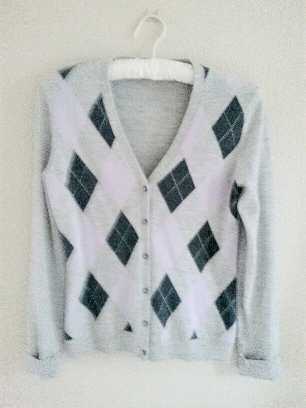Longevity of Use: My 30 Year Old Sweater
I recently watched an excellent webinar “The Future of Textiles: Creating Fashion Through Cradle to Cradle Design”, sponsored by SustainableBrands.com. In this webinar, William McDonough, Chief Executive of McDonough Innovation, speaks about circular models in the fashion industry – specifically around innovations in textiles that foster a more environmentally sustainable fashion industry. In addition, he speaks to other sustainability strategies such as designing for longevity of use, often initiated by fashion designers but then carried out by users. He tells the story of a Filson jacket, originally purchased and worn by his grandfather, which he still wears. This heirloom jacket embodies not only durable materials but also history and attachment. If you aren’t familiar with Filson, it is a Seattle, WA- based apparel company that started in 1897 as the C.C. Filson’s Alaska clothing and Blanket Manufacturers. First catering to men who were heading north from Seattle to Alaska during the Gold Rush, Filson products were/are designed and manufactured for durability, comfort, and longevity of use. However, it takes a consumer/user, in this case William McDonough and his grandfather, to carry through with the intent of the company by wearing and caring for this clothing over time. I believe a quote from their 1914 catalog says it all:
“The goods we quote must not be confounded with the cheap and vastly inferior grade with which the market is over-run. Such goods are not only useless for the purpose for which they are intended, but the person wearing them would be better off without them.”
I got to thinking – do I have any clothing that was originally designed for longevity of use and that I have, in fact, worn for many years? Although I have a vintage clothing collection of fashions worn by family members, I rarely, if ever, wear any of the items. They were for unique or special occasions (e.g., wedding dresses), do not fit me, or have long gone out of style. However, I do own a number of clothing items that I have worn for many years. One in particular, a Pringle wool/cashmere argyle cardigan sweater, was purchased approximately 30 years ago. I don’t wear it often but it still is in my “active inventory” and has lasted through numerous “closet cleanings”.
My Pringle sweater
As we think about purchasing fewer items and wearing them longer, what are the characteristics of clothing such as McDonough’s Filson jacket and my Pringle cardigan sweater and what can we learn from them?
- Quality fabrics and workmanship/construction. Both the Filson jacket and Pringle sweater were made with quality materials and construction. Whereas I believe this is a necessary characteristic for longevity of use, it isn’t a sufficient characteristic. As stated so well by designer and author Kate Fletcher (2012, p. 227) “making a garment last is very different to making a long-lasting garment.”
- Classic style or a style that can be adapted over time. The Pringle sweater is most certainly a classic style. In addition, it can also be worn to reflect current fashions – over the years it has been worn with a variety of tops and bottoms, belted and unbelted, buttoned and unbuttoned. Equally important is that I still like the colors and the argyle design, and it still fits.
- Emotional and/or experiential connection between the item and the wearer. This was clearly the case for McDonough’s Filson jacket. But just because clothing has emotional attachment and therefore may not be given or thrown away, does not necessarily mean it will be worn – I have a collection of vintage clothing that demonstrates this. And whereby a designer or creator may attempt to contribute to this attachment (e.g., co-created, hand-made); ultimately, the user determines the attachment or connection and its implications for extended use.
- Other attitudes and behaviors of the user. In addition to the user determining attachment or connection to the item, the user also determines how long to keep and wear the item. Do I consider the item to be an heirloom that will be saved but not worn? Will the item be worn until it is “worn out”? Do I have the skills, time, and incentives to remodel, repair, or mend the item? Do I have the space to store or keep the item? These questions can only be addressed by the user.
Some of these characteristics are evident in the Slow Fashion movement in the fashion industry (Cataldi, et al., 2010): co-creation, quality materials and construction, and intent for the item to be worn for a long time. Therefore, as designers, how do you design for longevity of use? Other characteristics reflect the relationship between the user and the clothing. Therefore, as consumers/users, what do you have in your closet that you have continued to wear over time? What are the characteristics of this clothing and what role did your attitudes, behaviors, and attachment play in keeping and wearing them? And, of course, how can we as consumers consider these characteristics each and every time we purchase new clothing?
References:
Cataldi, Carlotta; Dickson, Mareen; Grover, Chrystal. (2010). Slow Fashion: Tailoring a Strategic Approach towards Sustainability. Thesis submitted for completion of Master of Strategic Leadership towards Sustainability, Blekinge Institute of Technology, Karlskrona, Sweden. http://www.diva-portal.org/smash/record.jsf?pid=diva2%3A832785&dswid=-3996
Kate Fletcher (2012) Durability, Fashion, Sustainability: The Processes and Practices of Use. Fashion Practice, 4:2, 221-238 http://www.tandfonline.com/doi/pdf/10.2752/175693812X13403765252389?needAccess=true

